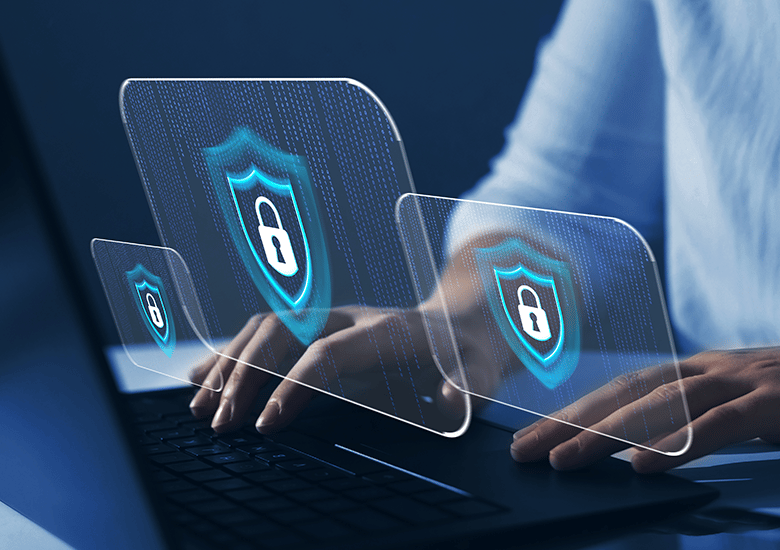DATAPRISE + COHERE
We are Cohere. Now we are Dataprise.
You've known us as the premier provider of cybersecurity services in New York City. Now get to know us as Dataprise.
As part of Dataprise, we now have a broader reach and a deeper bench all focused on delivering outstanding IT experiences to our NYC clients and beyond.
We offer secure IT solutions, first-rate cyber risk assessments, and compliant digital and cyber security.
We provide a unique blend of cyber security, risk evaluation, compliance, and IT solution services to financial institutions and other tightly controlled organizations.

Risk Assessment and Security Consulting
Dataprise offers a proactive 360-degree cybersecurity view with cybersecurity services like vendor risk assessment, threat management, and intrusion detection, all backed by a vast threat repository. Our SIEM system, trusted by U.S. agencies, provides real-time monitoring and compliance reporting.
Business Continuity and Disaster Recovery
We provide complete IT infrastructure security visibility to protect against threats and data loss. Dataprise + Cohere ensures business continuity with BCDR and safeguards against database issues impacting revenue and brand integrity.
Secure Operations Center (SOC) Management
Our SOC combines machine learning and human expertise to swiftly detect and address security threats. Our 24/7/365 staff of security professionals ensures continuous monitoring and rapid response to policy violations, malware, viruses, and other threats within your organization.
CYBERSECURITY AS A SERVICE
Our Layered Security Approach
With Dataprise, you stand protected against any nefarious and malicious criminal activity taking place on the Dark Web, where 90% of websites live. We execute this through our predictive, proactive, and preventative (P3) security model:
- PREDICTIVE: We anticipate potential threats and build protections against them.
- PROACTIVE: Prime your security posture to withstand internal and external attacks.
- PREVENTATIVE: Employ security controls and vulnerability assessment tools to prevent threats from happening.
Our goal is to mitigate your organization’s cyber exposure, from day one, so you can focus on revenue and growth.


COMPLIANCE AND ADVISORY SERVICES
Stay Compliant and Protect your Data with Dataprise
In addition to managed threat detection and response, our cyber security advisory services also include ensuring your company meets and exceeds all necessary compliance regulations. Dataprise securely stores historical audits and event logs for your business to help you comply with all relevant industry and compliance needs, including NY DFS, NY Shield Act, SEC, FINRA, PCI, HIPAA, GDPR, NIST, ISO, and others. Your security and event management software ingests system events from your desktops, servers, network, and mobile devices to identify threats, perform end user behavioral analysis, and facilitate proper compliance reporting.
Dataprise communications keep you in the know on all necessary upgrades and compliance changes so that you can do what you do best and run your company without giving cyber security and digital forensics a second thought.
DATAPRISE + COHERE CLOUD
Our Complete Infrastructure-as-a-service Solution
Our combined cyber-security-as-a-Service (CSaaS) and infrastructure-as-a-service (IaaS) approach offers unique predictive, proactive, and preventative advantages to organizations looking to secure their critical data, streamline their IT operations, and mitigate their cyber exposure.
Equipped with firewall security and the latest technological services, our IaaS highlights the benefits of a hosted cloud, which include:
- Cloud detection and response, a new approach to cloud security that
enables security teams to defend cloud applications and
infrastructure from account compromise, insider threat, and access
misuse - Highly reliable and secure infrastructure and applications
- Scalable and flexible cloud services with private, public, and hybrid
cloud offerings - Cloud-native security, a layered form of protection that discovers
how entities in your environment communicate so that elements
build on one another for stronger, more all-encompassing security

Featured Cybersecurity Resources
GET IN TOUCH
Ready to experience harmonious IT?
As one of the nation's largest managed IT services providers, our pool of over 500 certified engineers, subject matter experts, and IT support staff remove the burden of IT—freeing you up to be the best at what you do.


